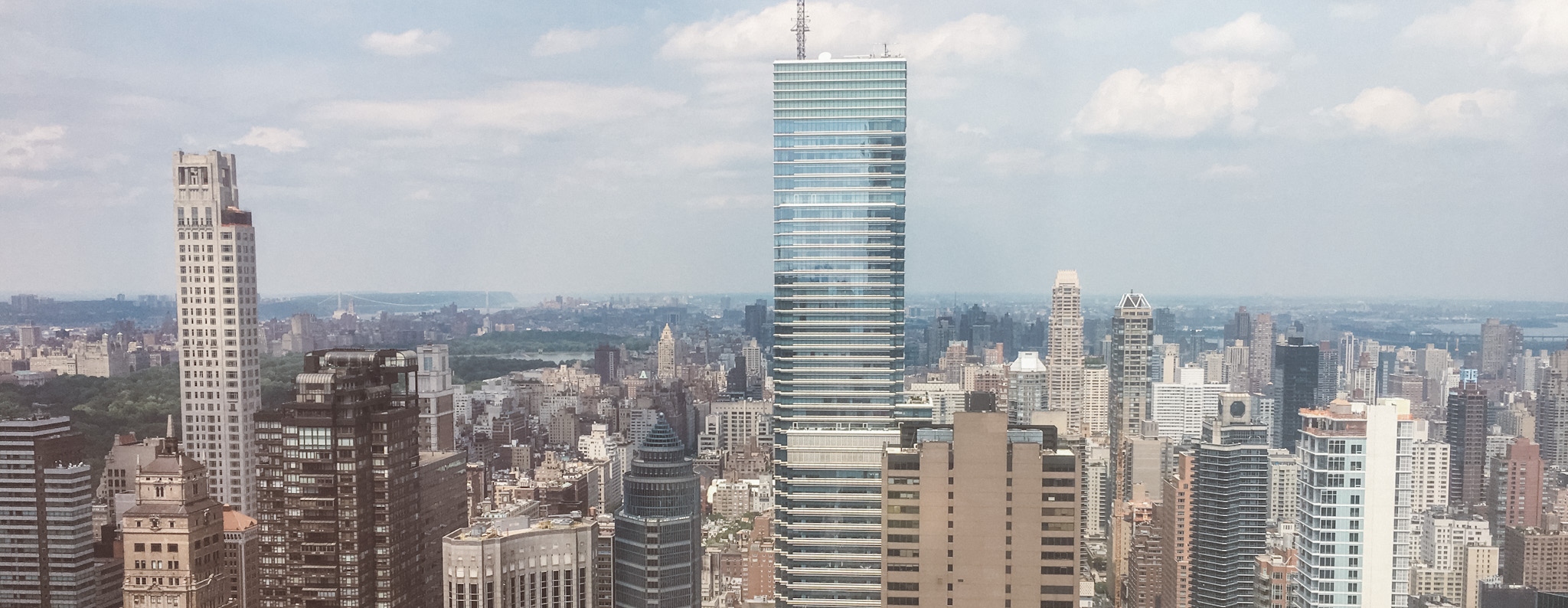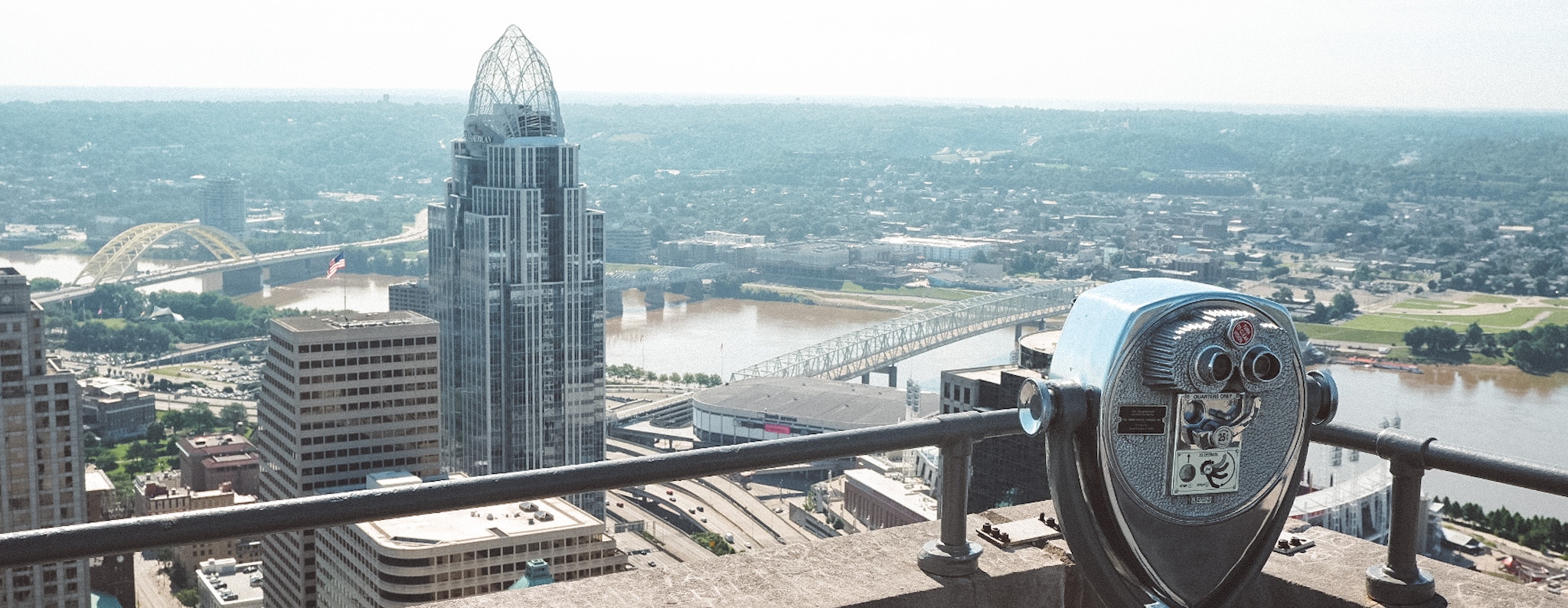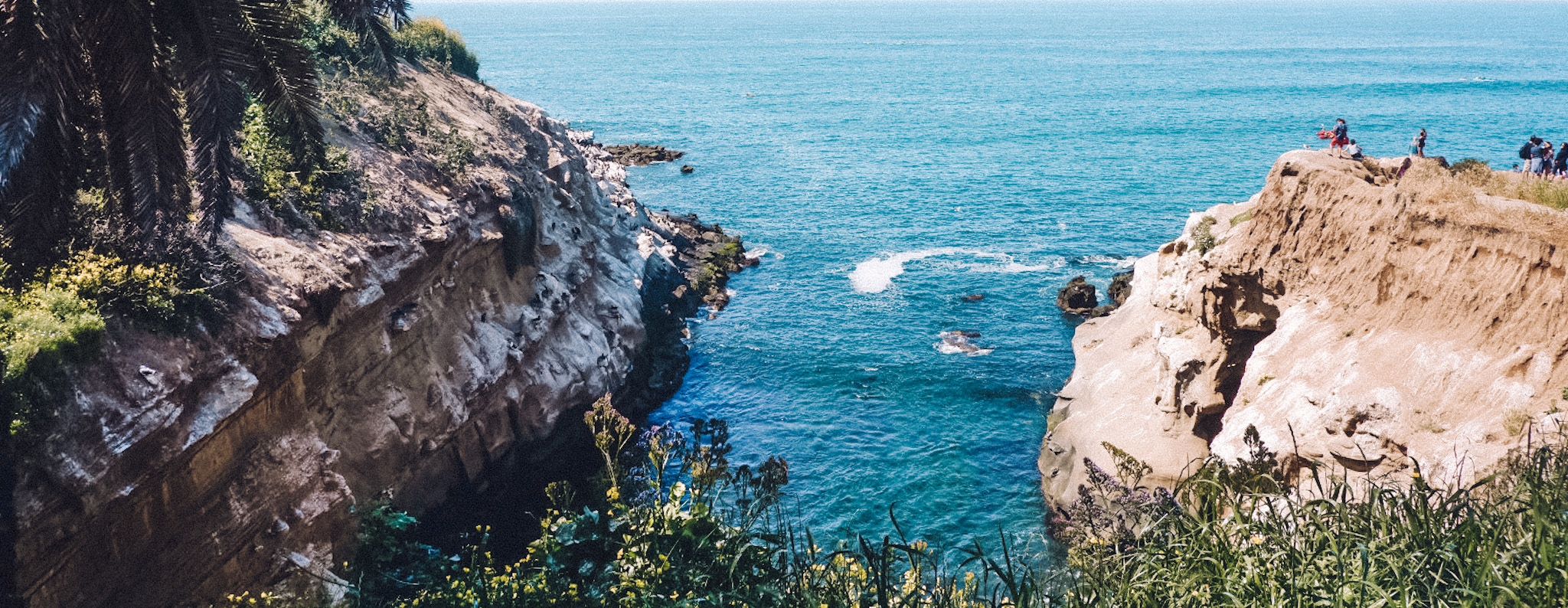“From California, to the New York Islands. From the Redwood Forest, to the Gulf Stream waters.” The US is such a geographically diverse country and has no shortage of beautiful scenery. The National Parks System has over 420 sites within its jurisdiction that are just waiting for you to explore. While the NPS has truly done a phenomenal job making parks accessible to every body, they are still sometimes limited by nature. While compiling a list of parks for plus size travelers, I took into consideration several factors, but above all- accessibility. Parks that have sights that are able to be seen from the car and those that are accessible (few stairs or steep inclines/declines) scored highly on this list. These are my top US parks for plus size travel!

10. Niagara Falls, New York
One of the natural wonders of the world and a bucket list destination for many! While the Canadian side typically gets a lot of the buzz, I much prefer the American side for the landscaping, space, and overall “park” feel. Walking around NFSP is overall very easy and flat, with large paved paths guiding you to all the vantage points. My favorite photo spot is Terrapin Point on Goat Island, for views of the Canadian Horseshoe falls. You can even stand on the international boarder on the Rainbow Bridge (don’t forget your passport)!
No trip to Niagara Falls is complete without getting up close to the falls! The Maid of the Mist is a ~30 minute boat ride that will take you to the base of both the American and Canadian falls. There is a spacious elevator that brings you down to the dock and back up again. Ponchos are provided with entry and are very size-inclusive. When I asked an employee approximately what size the ponchos were, they estimated they would fit a 4x person comfortably.
The Cave of the Winds is actually not a cave at all, but rather a large staircase that hugs the American falls. While the idea of a giant staircase may be daunting to some, fear not. These stairs are broken up into bite-sized sections so you are never climbing more than ~10 stairs at a time without a landing to break on. An elevator will take you to and from the start of the staircase, and then you’re free to guide yourself. There is no set “path” to follow, and you can walk down however far you want to. The highlight is by far the Hurricane Deck, where you can literally touch the falls!

9. Badlands, South Dakota
The Badlands deserve a spot on the top 10 because most of the spectacular views are able to be seen from the road, or a short walk. Badlands National Park is an easy stop off I-90 (if you’re on a cross-country road trip), or about 1 hour east of Rapid City, SD. There are three main entrances to the park: Pinnacles, Interior, and Northeast. All are connected by a single road, so it’s nearly impossible to get lost. I’d recommend entering and exiting from the same entrance, catching the stops on both sides of the road as you go each way. On my particular trip, I entered through Northeast and exited at Pinnacles. Depending on the time of year and day you visit, traffic can be busy and it was hard to pull off to see things on the left. There were a lot of u-turns!
There are countless overlooks and pull outs for photo ops and exploration, but some of my favorites included Panorama Point, the Yellow Mounds Overlook, and Pinnacles Overlook. Spectacular views, and plenty of space for shameless photo ops. Wherever you choose to stop, the views won’t disappoint.
As you approach the Pinnacles entrance, you’ll have the choice to continue left and stay in the park or veering right to exit. Make sure you stay left- there’s more to explore (and even fewer crowds). Only a couple of miles down the road, you’ll come across the spectacular Hay Butte and Badlands Wilderness overlooks. Spend some time at each to take in the views, and then continue a short distance further to Roberts Prairie Dog Town. These little animals are so cute and fun to watch- just make sure you watch out for them on the road!

8. Statue of Liberty, New York
The Statue of Liberty in New York City is such an iconic American landmark, and is truly accessible to every body. The only way to access Liberty Island is by ferry through Statue Cruises. Always buy your tickets directly with Statue Cruises and never from a third-party vendor or someone on the street. While day-of tickets are available, it’s always a smart idea to book ahead to secure your spot. The ferry will take you from Battery Park (at the bottom tip of Manhattan) to Liberty Island, and then on to Ellis Island. Once there, you’ll be able to explore the immigration museum and plenty of interactive exhibits. Both islands have wide, flat paths for easy walking and are handicap accessible. Don’t forget your wide angle lens – you’ll need it to capture the entire statue from the base!
If you’re looking to go inside the Statue of Liberty, there are two options available: the pedestal or to the top of her crown. While both are limited and should be booked in advance, tickets to the top of her crown go very quickly and are often booked up to 6 months in advance. And be warned- it’s 162 stairs from the pedestal to her crown (no elevator)!
Tip: For a free view of Lady Liberty, consider a ride on the Staten Island Ferry. The ferry runs 24/7 and rides right past the statue for unobstructed views. You won’t be able to get off on Liberty Island, but you can still take in all of her glory from afar. Plus, you’ll get another view of her on the ride back!

7. Joshua Tree, California
An absolute must-do in Southern California, and another park that is a dream for plus size travelers! Located just outside the city of Palm Springs or about a 3 hour drive from Los Angeles or San Diego, Joshua Tree National Park is an easy add to your itinerary! There are three entrances to the park: West, Twentynine Palms, and South. I’d recommend using the West and South points of entry, as the road that connects the two has the most attractions. I found the south end of the park to be more spread out, and the area closer to the west entrance to be busier, but follow that main road and you won’t miss a thing!
Be sure to stop at the Cholla Cactus Garden, Keys View, and Skull Rock (to name a few). Joshua Trees are found throughout the entire park, but more dense on the north side. Be sure to take some time to pull the car over and wander among the Seussian-like trees!
The earlier you can get into JTNP, the better. The park fills up quickly once late morning/afternoon hit. The park is open 24 hours a day and can be accessed at any time. Arriving shortly after sunrise would offer plenty of time to explore the park without feeling crowded. Star gazing is also a very popular attraction once the sun goes down!
Read More – My First Solo Trip: Palm Springs, California

6. Carlsbad Caverns, New Mexico
Having visited my fair share of caves, Carlsbad Caverns in New Mexico ranks at the top! While it is located smack dab in the middle of nowhere, it can be an easy day trip from either Midland or El Paso. When you arrive at the visitors center, you’ll received a timed ticket to take the elevator down to the cave. The times may vary, so plan to arrive early if you are traveling during peak season.
Once down in the cave, you’ll be on your own to self-navigate through the cavern. Depending on which path you opt to take, plan to spend about 60-90 minutes inside. Cameras, tripods, and flash are permitted so don’t forget them! Paths inside the cave are well list and very easy to follow. The Big Room is a massive opening in the cave where tons of different rock formations can be found, and is actually the only part of the cave that is handicap-accessible. The other paths may narrow and have inclines and declines. There are plenty of wide openings along the path to break and take in your surroundings!
Tip: Expect a lengthy wait for the elevators back up from the cave. We had to wait in a line for about 45 minutes. Plan your time accordingly!

5. Buck Island National Reef, US Virgin Islands
Alright, technically Buck Island is a National Reef, not a park. Since it is part of the National Parks System we’ll let it slide. Buck Island is a National Reef located about 1.5 miles north of the island of Saint Croix in the US Virgin Islands. It’s (of course) only accessible by boat, and there is no shortage of charters to take you out. I opted for a full day tour from Big Beard’s Adventure Tours and would highly recommend them. Their boats were large, spacious, and able to accommodate many people of all shapes and sizes. The island itself could not be more perfect – crystal clear blue water, warm golden sand, and lush vegetation. It’s the definition of paradise!
Buck Island is also famous for its underwater reef trail for picture-perfect snorkeling (no wetsuit required!). The water is calm and easy to float in while admiring the reefs and colorful fish that swim in and out. It’s ideal because unlike typical trails on land where you can’t veer off the path, you’re in water. Which means, you can literally stop any time you’d like and swim a straight line back to the boat. Don’t forget your underwater camera!

4. Grand Canyon, Arizona
The thing that makes the Grand Canyon a top park for plus size travelers is that it can be as much or as little as you make it! There are two main entrances to the park: North Rim and South Rim. The North Rim is often accessed by visitors from Las Vegas or St. George, and the South Rim is typically accessed from the cities of Flagstaff or Phoenix. Viewing areas are found all over, and are often a very short walk from parking areas. Paths are wide and paved, some with no more than a small staircase to access. A majority are handicap accessible as well.
Should you be looking for a little bit of activity, both rims offer a variety of hiking options. Over a dozen day hiking trails are available, with some as short as a quarter of a mile long. A visit to the Grand Canyon truly can be curated exactly to your specific preferences!
Read More: 5 Things to Expect Visiting Arizona in July

3. Mount Rushmore National Monument, South Dakota
Alright, another one that isn’t technically a park- but we’ll let it slide! Mount Rushmore is nestled in the Black Hills of Western South Dakota (about a half hour west of Rapid City). The monument features carvings of George Washington, Thomas Jefferson, Teddy Roosevelt, and Abraham Lincoln. The park is very accessible, with large, flat, spacious paths leading from the parking area straight to the viewing area. The walkway is lined with flags of all the US states and territories that perfectly frames the carvings of the iconic presidents.
An absolute must-do at Mount Rushmore is to walk the President’s Trail. This will take you right up to the base of the mountain for up close views. The first half of this trail is flat, wheelchair accessible, and makes for an easy stroll. Once you get to the Grand View Terrace however, the trail turns into a long staircase down into a valley. Many people choose to turn back here to avoid the dreaded “what goes down must come up”. If you choose to continue on the trail, you will be guided back up another series of staircases that take you back to the amphitheater and main viewing area. There were places to break along the staircase, but it is certainly something to consider. The entire trail is about a 0.6 mile loop and you can click here for a more detailed map.
Read More: 4 Reasons to Visit Mount Rushmore at Sunrise

2. Haleakalā, Maui, Hawaii
A visit to Maui is not complete without watching the sunrise at Haleakalā National Park! Haleakalā was (and still is) sacred to Native Hawaiians who find inspiration at its peak. On the morning of your reservation (which are required to be made ahead of time), you’ll wake up in the middle of the night and drive your car all the way to the top of the mountain. There are several large parking lots near the summit, but only one at the very top (where you want to be). My advice would be to plan to arrive earlier than you think. You will want to guarantee your spot in the top lot and avoid having to hike up the last stretch.
Once you arrive, the only thing left to do is find your sunrise viewing spot and enjoy. Keep in mind that it’s about an hour drive from the base to the summit, so plan accordingly! Once the sun rises, there are some trails for hiking, though most people are typically tired and drive back down the mountain (myself included).
Tip: This may be Hawaii, but the summit of Haleakalā is COLD. Generally speaking, you lose about 3°F for every 1,000 feet in elevation. Which means, it is about 30°F colder at the summit than at the base. Dress as warmly as you can. I ended up wrapping myself in beach towels that we hadin the trunk of our car.

1. Redwoods, California
Redwood National Park in Northern California is home to the tallest trees on earth and nearly 40 miles of rugged coastline! The park is remote and a bit of a drive from major cities like San Francisco and Sacramento. Consider flying into Redding, CA or Medford, OR (or better yet- pair it with a drive down the Oregon Coast). The best part about the Redwoods is that most of the exploring can be done by car or very short walks, and hikes can be as short or as long as you’d like. If you’re looking for a day-long hike, a 5 minute walk, or a quick pull over in your car- you’re in the right place.
Avenue of the Giants is a 30+ mile drive that stretches through the heart of the Redwoods. This scenic road is lined with the tallest trees you’ll ever see and shots are just waiting to grace your Instagram feed. To experience it all, you’ll need to exit Highway 101 at either the North or South entrance. Big Tree Wayside is another easy stop (about 2 miles off of Highway 101), and is absolutely worth your time. A flat, paved trail will lead you from a small parking lot down to a 1,500 year old tree. The walk itself is easy and will take about 5 minutes. You can then circumnavigate a 68′ foot wide, 300′ tall tree!
No trip to the Redwoods is complete without visiting the iconic Chandelier Tree! The tree is 315′ tall and 21′ in diameter, meaning it’s big enough to literally drive through! A large opening is cut through and cars can line up for the opportunity to drive your car through the thick trunk and take some photos. The tree is estimated to be over 2,400 years old, making it – literally – older than Christ. It’s truly a remarkable stop on your itinerary and not to be missed!
Traveling soon? Check out my Travel Tips page to help you score good deals on flights, packing tips, tools to help you plan, and more!














No Comments